
Serge Schmemann, son of Fr. Alexander Schmemann, in his wonderful little book, Echoes of a Native Land, records a letter written from one of his family members of an earlier generation, who spent several years in the prisons of the Soviets and died there. The letter, written on the night of Pascha in 1928 is to a family member, “Uncle Grishanchik” (This was Grigory Trubetskoi who had managed to emigrate to Paris). This letter should become a classic of Orthodox writing and witness to the faith that sustained so many and is today being resurrected in so many places. The triumph of the Resurrection so transcends his prison cell it’s a wonder that the walls remained. The entire book is a wonderful read. I recommend it without reservation.
30 March/ 12 April 1928
Dear Uncle Grishanchik,
I greet you and Aunt Masha with the impending Holy Day, and I wish you all the very best. For a long, long time I have wanted to write to you, dear Uncle Grishanchik; you always showed such concern for me, you helped me so generously in a difficult moment of my life, and, mainly, your entire image is so inseparably linked for each of us, your nephews, with such wonderful memories; you always are, were, and will be our dearest, most beloved uncle.
I am approaching the fourth Easter that I will spend behind these walls, separated from my family, but the feelings for these holy days which were infused in me from earliest childhood do not fail me now; from the beginning of Holy Week I have felt the approach of the Feast, I follow the life of the Church, I repeat to myself the hymns of the Holy Week services, and in my soul there arise those feelings of tender reverence that I used to feel as a child going to confession or communion. At 35 those feelings are as strong and as deep as in those childhood years.
My dear Uncle Grishanchik, going over past Easters in my memory, I remember our last Easter at Sergiyevskoye, which we spent with you and Aunt Masha, and I felt the immediate need to write you. If you have not forgotten, Easter in 1918 was rather late, and spring was early and very warm, so when in the last weeks of Lent I had to take Aunt Masha to Ferzikovo, the roads were impassable. I remember that trip as now; it was a warm, heavy, and humid day, which consumed the last snow in the forests and gullies faster than the hottest sun; wherever you looked, water, water, and more water, and all the sounds seemed to rise from it, from the burbling and rushing of the streams on all sides to the ceaseless ring of countless larks. We had to go by sleigh – not on the road, which wound through the half-naked fields in a single muddy ridge, but alongside, carefully choosing the route. Each hoofprint, each track left by the runners, immediately turned into a small muddy stream, busily rushing off somewhere. We drove forever, exhausting the poor horse, and, finally, after successfully eluding the Polivanovo field, one of the most difficult places, I became too bold and got Aunt Masha so mired that I nearly drowned the horse and the sleigh; we had to unharness to pull it out and got wet to the eyebrows; in a word, total “local color.”
 Photo: triptonkosti.ru
Photo: triptonkosti.ru
I remember the feeling I had that spring of growing strength, but that entire happy springtime din, for all the beauty and joy of awakening nature, could not muffle the sense of alarm that squeezed the heart in each of us. Either some hand rose in senseless fury to profane our Sergiyevskoye, or there was the troubling sense that our loving and closely welded family was being broken up: Sonia far off somewhere with a pile of kids, alone, separated from her husband; Seryozha, just married, we don’t know where or how, and you, my dear Uncle Grisha and Auht Masha, separated from your young ones, in constant worry over them. It was a hard and difficult time. But I believe that beyond these specific problems, this spiritual fog had a deeper common source: we all, old and young, stood then at a critical turning point: unaware of it, we were bidding farewell to a past filled with beloved memories, while ahead there loomed some hostile utterly unknown future.
And in the midst of all this came Holy Week. the spring was in that stage when nature, after a big shove to cast off winter’s shackles, suddenly grows quiet, as if resting from the first victory. But below this apparent calm there is always the sense of a complex, hidden process taking place somewhere deep in the earth, which is preparing to open up in all its force, in all the beauty of growth and flowering. Plowing and seeding the earth rasied rich scents, and, following the plow on the sweaty, softly turning furrow, you were enveloped in the marvelous smell of moist earth. I always became intoxicated by that smell, because in it one senses the limitless creative power of nature.
I don’t know how you all felt at the time, because I lived a totally separate life and worked from morning to night in the fields, not seeing, and, yes, not wanting to see, anything else. It was too painful to think, and only total physical exhaustion gave one a chance, if not to forget, then at least to forget oneself. But with Holy Week began the services in church and at home, I had to lead the choir in rehearsal and in church; on Holy Wednesday I finished the sowing of oats and, putting away the plow and harrow, gave myself entirely over to the tuning fork. And here began that which I will never forget!
Dear Uncle Grishanchik! Do you remember the service of the Twelve Gospels in our Sergiyevskoye church? Do you remember that marvelous, inimitable manner of our little parson? This spring will be nine years that he passed away during the midnight Easter service, but even now, when I hear certain litanies or certain Gospel readings, I can hear the exhilarated voice of our kind parson, his intonations piercing to the very soul. I remember that you were taken by this service, that it had a large impact on you. I see now the huge crucifix rising in the midst of the church, with figures of the Mother of God on one side and the Apostle John on the other, framed by multicolored votive lights, the waving flame of many candles, and, among the thoroughly familiar throng of Sergiyevskoye peasants, your figure by the right wall in front of the candle counter, with a contemplative expression on your face. If you only knew what was happening in my soul at that time! It was an entire turnover, some huge, healing revelation!
Don’t be surprised that I’m writing this way; I don’t think I’m exaggerating anything, it’s just that I feel great emotion remembering all these things, because I am continuously breaking off to go to the window and listen. A quiet, starry night hangs over Moscow, and I can hear first one, then another church mark the successive Gospels with slow, measured strikes of the bell. I think of my Lina and our Marinochka, of Papa, Mama, my sisters, brothers, of all of you, feeling the sadness of expatriation in these days, all so dear and close. However painful, especially at this time, the awareness of our separation, I firmly, unshakably believe all the same that the hour will come when we will all gather together, just as you are all gathered now in my thoughts.
1/14 April – They’ve allowed me to finish writing letters, and I deliberately sat down to finish it this night. Any minute now the Easter matins will start; in our cell everything is clean, and on our large common table stand kulichi and paskha, a huge “X.B.” [Christos Voskrese “Christ is risen”] from fresh watercress is beautifully arranged on a white table cloth with brightly colored eggs all around. It’s unusually quiet in the cell; in order not to arouse the guards, we all lay down on lowered cots (there are 24 of us) in anticipation of the bells, and I sat down to write to you again.
I remember I walked out of the Sergiyevskoye church at that time overwhelmed by a mass of feelings and sensations, and my earlier spiritual fog seemed a trifle, deserving of no attention. In the great images of the Holy Week services, the horror of man’s sin and the suffering of the Creator leading to the great triumph of the resurrection, I suddenly discovered that eternal, indestructible beginning, which was also in that temporarily quiet spring, hiding in itself the seed of a total renewal of all that lives. The services continued in their stern, rich order; images replaced images, and when, on Holy Saturday, after the singing of “Arise, O Lord,” the deacon, having changed into a white robe, walked into the center of the church to the burial cloth to read the gospel about the resurrection, it seemed to me that we are all equally shaken, that we all feel and pray as one.
In the meantime, spring went on the offensive. When we walked to the Easter matins, the night was humid, heavy clouds covered the sky, and walking through the dark alleys of the linden park, I imagined a motion in the ground, as if innumerable invisible plants were pushing through the earth toward air and light.
I don’t know if our midnight Easter matins made any impression on you then. For me there never was, and never will be, anything better than Easter at Seriyevskoye. We are all too organically tied to Sergiyevskoye for anything to transcend it, to evoke so much good. This is not blind patriotism, because for all of us Seriyevskoye was that spiritual cradle in which everything by which each of us lives and breathes was born and raised.
My dear Uncle Grishanchik, as I’ve been writing to you the scattered ringing around Moscow has become a mighty festive peal. Processions have begun, the sounds of firecrackers reach us, one church after another joins the growing din of bells. The wave of sound swells. There! Somewhere entirely nearby, a small church breaks brightly through the common chord with such a joyous, exultant little voice. Sometimes it seems that the tumult has begun to wane, and suddenly a new wave rushes in with unexpected strength, a grand hymn between heaven and earth.
I cannot write any more! That which I now hear is too overwhelming, too good, to try to convey in words. The incontrovertible sermon of the Resurrection seems to rise from this mighty peal of praise. My dear uncle Grishanchik, it is so good in my soul that the only way I can express my spirit is to say to you once again, Christ is Risen!
Georgy



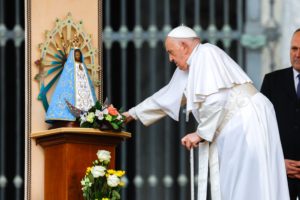



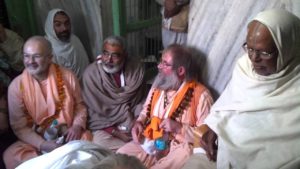
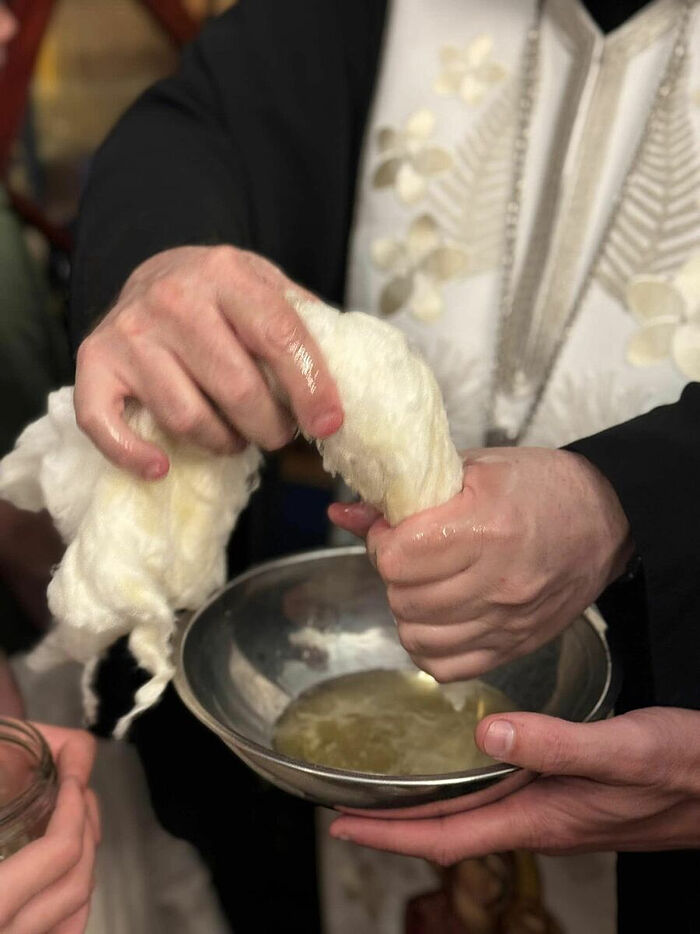
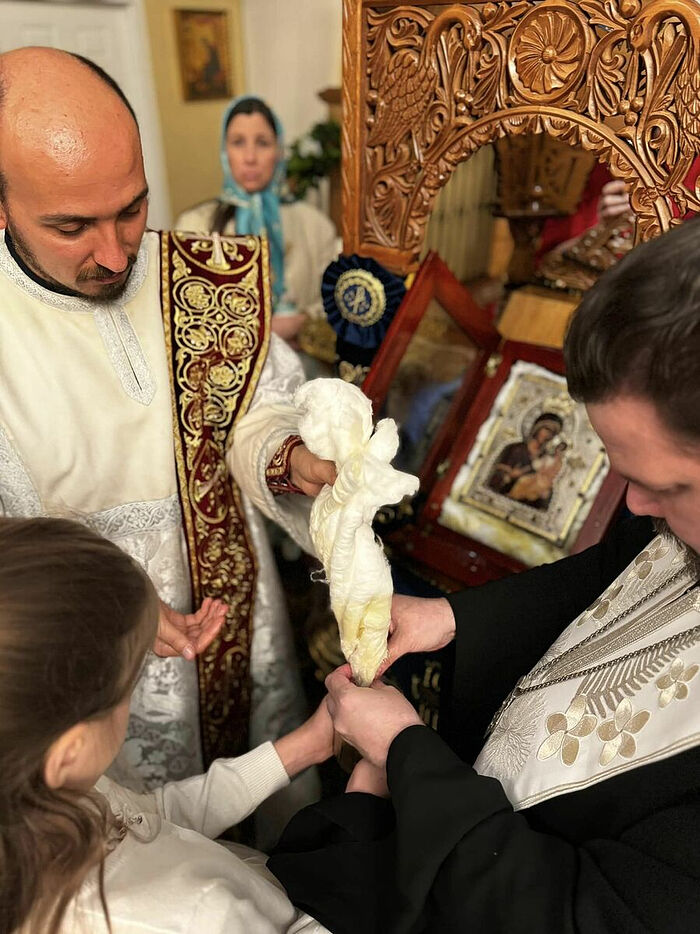
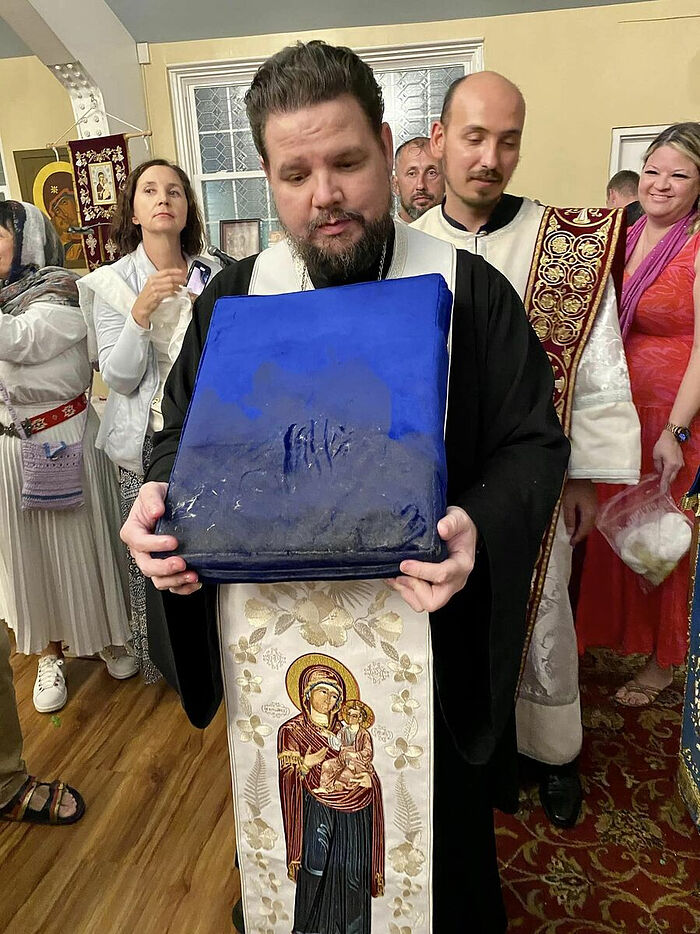
 Miraculous healing by Hawaiian Iveron Icon at St. Tikhon’s MonasteryA man named Daniel tells the story of how he suffered from a degenerative brain disease for two years, which caused him his health, his job, and his ability to spend time with his family. He felt he was on the brink of death.
Miraculous healing by Hawaiian Iveron Icon at St. Tikhon’s MonasteryA man named Daniel tells the story of how he suffered from a degenerative brain disease for two years, which caused him his health, his job, and his ability to spend time with his family. He felt he was on the brink of death. The Iveron Mother of God, and the Myrrh-Streaming Icons of HawaiiIn June of 2008, the “Hawaiian” Myrrh-streaming Iveron Icon was officially recognized by the Russian Orthodox Church Outside Russia as miraculous and worthy of veneration, and was given the blessing to travel to the various churches and monasteries of Holy Orthodoxy. The original “owner” of the Icon, Reader Nectarios, was charged by the Russian Orthodox Church to be Her guardian, and provide for the safety and care of this Wonderworking Icon of Christ’s Holy Church.
The Iveron Mother of God, and the Myrrh-Streaming Icons of HawaiiIn June of 2008, the “Hawaiian” Myrrh-streaming Iveron Icon was officially recognized by the Russian Orthodox Church Outside Russia as miraculous and worthy of veneration, and was given the blessing to travel to the various churches and monasteries of Holy Orthodoxy. The original “owner” of the Icon, Reader Nectarios, was charged by the Russian Orthodox Church to be Her guardian, and provide for the safety and care of this Wonderworking Icon of Christ’s Holy Church.